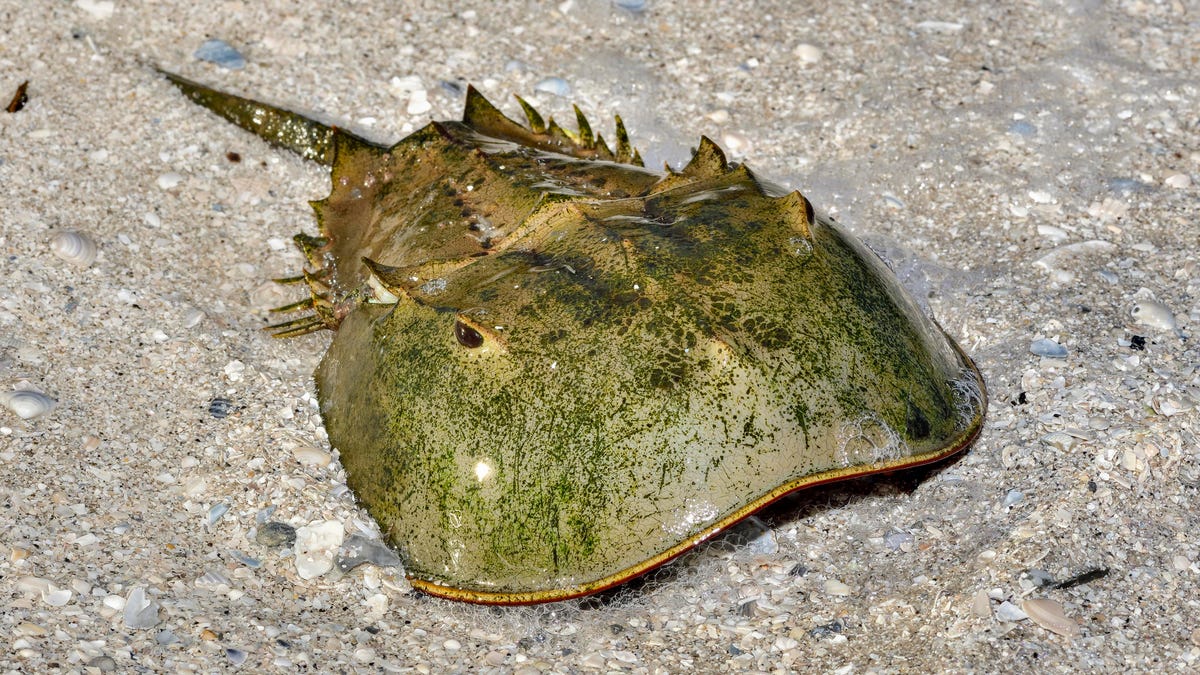Scientists discover horseshoe crabs are related to spiders
It looks like a facehugger, its blue blood is harvested by scientists and now it's officially part of the spider family! You're welcome!

The horseshoe crab.
The horseshoe crab doesn't have to do much to haunt your nightmares. Their hard shell hides scuttling legs and pincers, they use their long, spiny tail to flip themselves over and they bleed milky blue blood. Think less "Sebastien from The Little Mermaid" and more "Facehugger from Alien."
But it turns out the horseshoe crab is neither adorable cartoon crustacean or alien species -- in fact scientists have now proven the horseshoe crab isn't a crab at all. It's an arachnid.
The horseshoe crab (Xiphosura) is already one of the weirder creatures in the animal kingdom. While only four species of the animal have survived to the modern era, some growing roughly half a metre long, those species have survived relatively unchanged for 450 million years and through multiple mass extinction events, giving them the nickname "living fossils."
Because Xiphosura blood is so sensitive to toxins, scientists also harvest their blood (which is a lovely shade of sky blue) to use for testing for contamination in things like medical equipment. (The blood is so valuable, researchers in Florida recently called on the public to report sightings of horseshoe crabs mating under the next full moon. Sorry, kids, looks like Disney World will have to wait!)
Horseshoe crabs being bled in a laboratory.
Now a new research paper, published by the University of Wisconsin-Madison and first reported by National Geographic, has cast the horseshoe crab in a new light. Studying a raft of genetic material as well as data from genome sequencing projects, researchers have traced the lineage of horseshoe crab family tree.
The finding?
Horseshoe crabs didn't evolve separately to arachnids on land like spiders and scorpions. They are actually classified as aquatic arachnids.
"This particular part of the tree of life has always been quite challenging to solve," lead researcher Jesús Ballesteros told National Geographic.
"But one of the things that was surprising in this analysis is that regardless of how we treated the data, we consistently found the same results … the horseshoe crabs are always nested inside the arachnids [on the family tree]."
So, if you're an arachnophobic, you can now comfortably add the horseshoe crab to your list of fears.
And if you're a human being with eyes, you probably can too.

